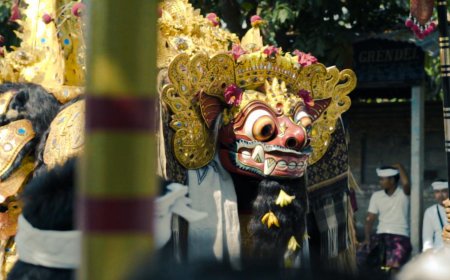Rejang Keraman Dance: Symbol of Purity and Spiritual Cultural Heritage of Kedis Village in Balinese Religious Ceremonies
Bali is known for its various traditions that are full of spiritual and cultural meaning. One of the sacred traditions that is still preserved to this day is the Rejang Keraman Dance, a ceremonial dance originating from Kedis Village, Busungbiu District, Buleleng Regency. This dance is not only a traditional dance, but also has deep spiritual value for the people of Kedis Village. The Rejang Keraman Dance is often performed as part of a series of religious ceremonies that aim to honor and worship the gods.

History and Meaning of Rejang Keraman Dance
There is no definite written record of when the Rejang Keraman Dance was first performed. However, this tradition has been going on since ancient times and has been passed down from generation to generation. This dance is believed to be a form of offering to the gods who are believed to be present in traditional ceremonies at the temple. The word "Rejang" itself means "dancing together", while "Keraman" refers to the sacred and holy aspects of this dance.
This dance is generally danced by both men and women, from young to older. They dance with great reverence as a form of spiritual offering. According to the village elders, the Rejang Keraman Dance is not just part of the ceremony, but also an expression of gratitude and hope for blessings given by the gods to the community. This dance is also a symbol of purity and harmony, reflecting the close relationship between humans, nature, and God in the teachings of Tri Hita Karana.

Rejang Keraman Dance (source: Author's Collection)
Rejang Keraman Dance Performance Procession
The Rejang Keraman Dance is usually performed in a series of large ceremonies at the Pura Desa, such as piodalan ceremonies or other religious ceremonies related to the life cycle of the local community. This dance is performed by both men and women, from teenagers to adults. The dancers wear traditional Balinese clothing, where women wear brightly colored songket and kebaya cloth, while men wear kamben cloth and udeng (headband). Headdresses made of janur or flowers are also used as symbols of purity.
Before the dance begins, the dancers usually undergo a self-cleansing ritual or melukat, which aims to purify the body and mind so that they are worthy of dancing this sacred dance. After cleansing, the dancers gather in the jaba tengah (temple yard) and begin dancing to the strains of the Balinese gamelan that accompanies them.
The dance movements are soft and graceful, reflecting calm and respect for the gods. This dance is performed in groups, where the dancers form a circular or straight line, moving in harmony without having to be led by a main dancer. Male and female dancers interact with each other in this dance, creating a harmony that reflects unity and collective spirit in conveying prayers and hopes to the gods.

Rejang Keraman Dance (source: Author's Collection)
Conservation and Challenges in the Modern Era
Despite the development of modernization, the people of Kedis Village continue to strive to preserve the Rejang Keraman Dance as a sacred tradition. This dance is passed down from generation to generation, with parents teaching its spiritual values to their children, both boys and girls. However, challenges arise from the threat of modernization that can erode the sacredness of this tradition.
In order to remain relevant, several aspects of the dance have been adjusted, such as the duration of the procession which is now shorter. However, its spiritual meaning is maintained, and this dance remains an integral part of religious ceremonies, not just a spectacle. Preserving the Rejang Keraman Dance is a shared responsibility to keep this cultural heritage alive amidst the development of the times.
The Rejang Keraman Dance from Kedis Village is a symbol of purity and deep spiritual expression for the Balinese people, especially in Kedis Village. This dance is not only part of religious rituals, but also a medium to maintain a harmonious relationship between humans, nature, and God. As a valuable cultural heritage, the preservation of the Rejang Keraman Dance is a shared responsibility, both by the Balinese people and the next generation, so that the spiritual and cultural values contained within it remain alive and sustainable amidst increasingly rapid modernization.






























































